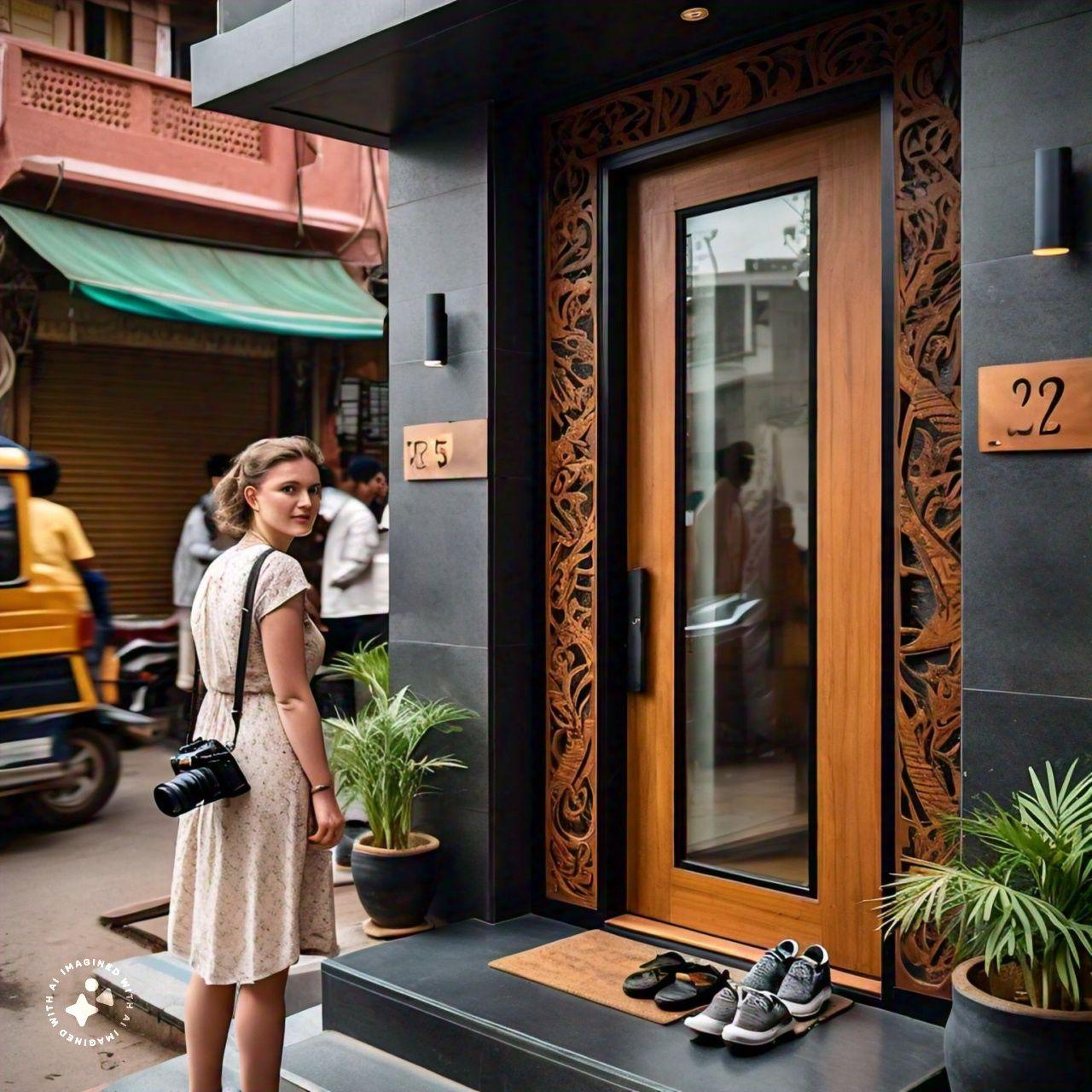In India, taking off your shoes is more than just a habit—it’s a gesture of respect and cleanliness deeply rooted in culture. For travelers, knowing when and where to remove your footwear can make your journey smoother and show locals you value their traditions. Here’s a practical, engaging guide to help you navigate this custom, packed with insights and tips to enhance your India adventure.
Why Remove Shoes in India?
Shoes track dust, dirt, and germs from the bustling streets, so removing them keeps indoor spaces clean and sacred areas pure. It’s also a sign of humility and respect for the space you’re entering. Whether you’re stepping into a home or a temple, going barefoot (or in socks) shows you’re honoring local customs.
Where You Must Remove Your Shoes
1. Homes
- Why: Keeping shoes on in someone’s home is considered rude, as it brings outdoor dirt inside. Homes are private, sacred spaces in Indian culture.
- What to Expect: Most homes have a shoe rack or designated spot near the entrance. Your host might offer slippers for indoor use.
- Traveler Tip: If invited to an Indian home, remove your shoes before entering, even if your host says it’s okay. It’s a polite gesture that’ll earn you smiles.
2. Religious Sites
- Why: Temples, Mosques, Gurudwaras, and Jain shrines are holy spaces where cleanliness and reverence are paramount.
- What to Expect: Shoe removal is mandatory. You’ll often find racks or counters outside where you can leave your shoes, sometimes for a small fee (₹10-20). Some sites, like the Golden Temple in Amritsar, have foot-washing areas.
- Traveler Tip: Dress modestly (cover shoulders and knees) and carry socks if you’re uneasy about going barefoot. For example, at Delhi’s Jama Masjid, socks are handy on hot or cold days.
- Example: At Varanasi’s Kashi Vishwanath Temple, you’ll leave shoes at a counter and walk barefoot through the vibrant ghats, immersing yourself in the spiritual energy.
3. Certain Shops and Businesses
- Why: Small shops, clinics, or boutique stores often request shoe removal to maintain hygiene, especially in carpeted or upscale spaces.
- What to Expect: Look for signs or a shoe rack near the entrance. This is common in jewelry stores in Mumbai or Ayurvedic clinics in Rishikesh.
- Traveler Tip: If you’re shopping in a local market like Delhi’s Chandni Chowk, ask politely if unsure. Locals appreciate your effort to follow their norms.
Where It’s Optional but Recommended
1. Museums and Historical Monuments
- Why: Removing shoes protects delicate flooring, ancient artifacts, or restored interiors. It’s not always required but often encouraged.
- What to Expect: Some sites, like Hyderabad’s Golconda Fort or Agra’s Taj Mahal, may allow shoes but suggest removing them in specific areas (e.g., marble interiors).
- Traveler Tip: Carry lightweight socks to stay comfortable on stone floors. For instance, at Jaipur’s City Palace museum, socks keep your feet cool while respecting the space.
- Example: At Delhi’s National Museum, you might notice locals removing shoes near rare exhibits, even if it’s not mandatory.
2. Yoga Studios and Cultural Centers
- Why: These spaces prioritize cleanliness for activities like yoga, meditation, or dance.
- What to Expect: Most studios, like those in Rishikesh or Goa, have a no-shoe policy to keep mats and floors spotless.
- Traveler Tip: Bring clean socks or wash your feet before class if you’ve been exploring dusty streets.
ITT Thumb Rule
When in Doubt, Take Them Off: If you’re confused about whether to keep your shoes on, observe others or ask politely: “Should I remove our shoes?” Locals will appreciate your respect and guide you.
ITT Pro Tips
Pack Smart for Comfort:
- Carry a pair of lightweight socks in your daypack. They’re a lifesaver at crowded sites like Tirupati’s Venkateswara Temple, where floors can be hot or gritty.
- Socks with grip soles are great for slippery marble floors at places like Udaipur’s Jagdish Temple.
- Keep Your Shoes Safe:
- Bring a small drawstring bag to store your shoes if you’re worried about leaving them unattended, especially at busy spots like Pushkar’s Brahma Temple.
- At major sites, shoe counters are reliable, but keep an eye on your belongings in crowded areas.
- Mind Your Footwear Choice:
- Opt for easy-to-slip-on shoes like sandals or loafers when visiting multiple sites in one day, such as Hampi’s ruins or Madurai’s Meenakshi Temple.
- Avoid complicated laces or boots, which slow you down at entrances.
- Stay Hygienic:
- Keep your feet clean, especially if you’re walking barefoot at religious sites. Carry wet wipes or sanitizer for a quick refresh.
- Example: After exploring Kolkata’s Kalighat Temple barefoot, a quick wipe keeps you ready for the next stop.
- Respect Local Sensitivities:
- Avoid pointing your feet at people or sacred objects, as it’s considered disrespectful. For instance, when sitting in a gurudwara, tuck your feet under or sit cross-legged.
Cultural Insight: Why This Matters
Removing shoes isn’t just about cleanliness—it’s a way to connect with India’s ethos of hospitality and spirituality. When you slip off your shoes at a homestay in Rajasthan or a temple in Tamil Nadu, you’re stepping into a shared cultural space. Locals notice and appreciate travelers who embrace these customs, often leading to warmer interactions and deeper experiences.
Categories :


